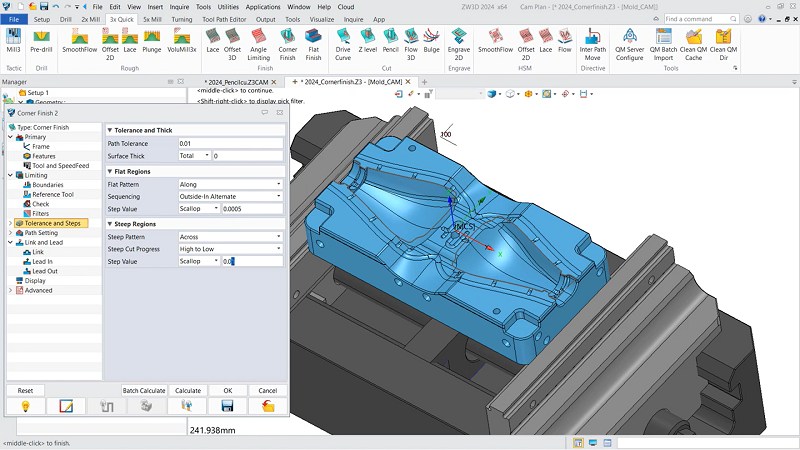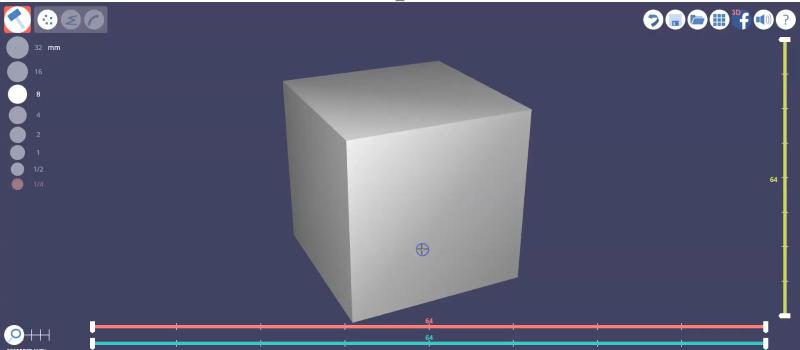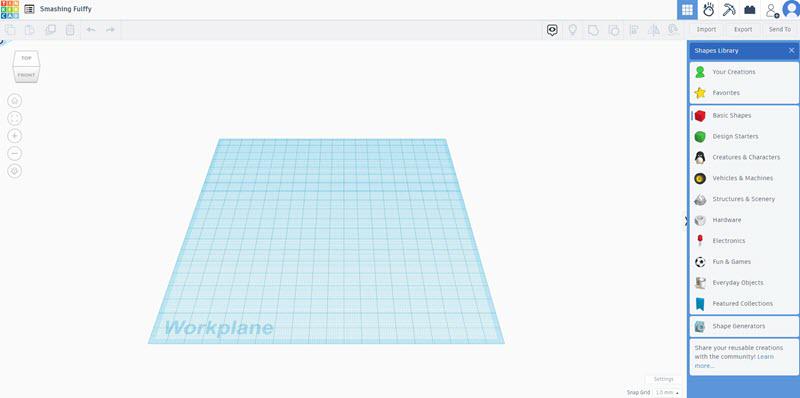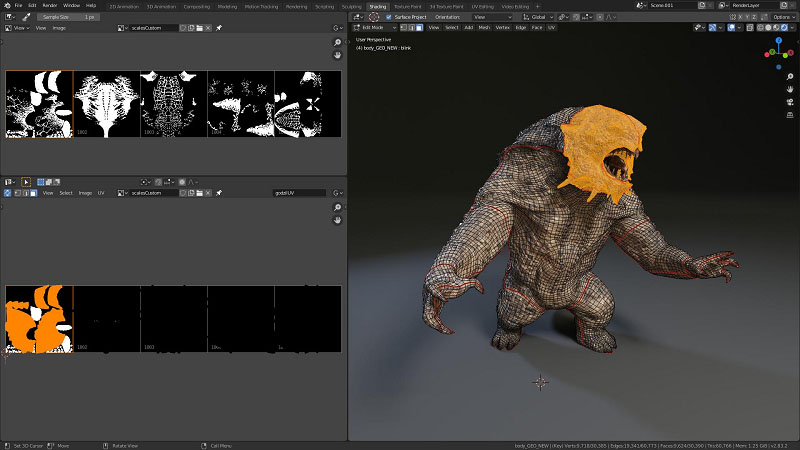3D modeling software is widely used among industrial equipment, consumer goods, plastic molds, CNC machining, automotive parts, and so on. There is plenty of free 3D modeling software for beginners, meaning you can practice and gain the 3D modeling skills you require to produce a final product of your own.
Tools that are developed in this way will make it possible to create paintings with high detail and lifelike qualities you whenever you want wherever you are. Whatever the concept of your project is, it would be much easier and more convenient for you to use easy and beginner-friendly 3D modeling software.
We have tested the current top-rated 3D modeling software to judge which one truly is good, and created a list of the best 7 free 3D modeling software just for beginners in this article. Now start your journey!
| Read Also: 7 Best 3D CAD Software of 2024 (with Pricing, Pros & Cons) |
How to Choose the Best Free 3D Modeling Software for Beginners?
Software considered to be the best 3D modeling software for beginners is simple to use, with its tutorials and instructions, software features, and community support. Keep on reading to learn the details.
Ease of Use
Unlike software for experts, 3D modeling software for beginners should be easy and inexpensive to use, and powerful in terms of the options they offer. This type of software typically has simple workflows, straightforward navigation, drag-and-drop functionality, safe modeling, and easy-to-understand menus and toolbars. Because of its user-friendly design, you can learn 3D modeling quickly, and as you become more familiar with it, you’ll find that both your learning efficiency and your interest in the subject will keep growing.
Tutorials and Resources
Most of today’s 3D modeling tools usually come with detailed introductory tutorials, well-written documentation, or other learning resources. Be sure to choose a tool that offers these resources, so you can learn the basics of 3D modeling and make the most of the opportunities it provides, which will help you improve your skills.
Software Features
Even though you’re a beginner and many professional 3D modeling software packages have too many complex features that aren’t suitable for you, when you’re looking for a beginner-friendly modeling tool, you should also consider whether it offers a rich set of features and provides enough tools and options to levitate your 3D model ideas into reality.
Community Support
Look for software that has an online community platform where artists can interact by sharing their experiences and work, and ask questions while seeking advice from fellow artists and designers. Moreover, you may find numerous reviews, score evaluations, and user recordings in the forum/community which enable you to get lots of software experiences of real users.
Top 1. ZW3D
ZW3D, developed by ZWSOFT, is a comprehensive 3D CAD/CAE/CAM solution that provides a full suite of tools for 3D modeling, drafting, engineering processes, and manufacturing. This powerful yet user-friendly software is suitable for a variety of industries, including mechanical engineering, manufacturing, and small product design. ZW3D’s modeling, editing, and simulation capabilities facilitate closer collaboration among development teams, helping to bring products to market more efficiently.
With ZW3D, you can create and modify designs quickly and effortlessly by adjusting parameters and constraints. The software combines surface and solid modeling techniques, offering a wider range of design possibilities. Additionally, ZW3D includes CAE tools for structural simulation, enabling you to assess and improve your designs with ease. It also provides CAM tools for milling and turning, allowing you to generate tool paths and simulate machining processes.
Offering a 30-day free trial, ZW3D is the best 3D modeling software for beginners that helps streamline the entire design and manufacturing workflow, from concept to final product.
| Note: The ZW3D 2025 version is now available for online download. This release builds on the 2024 version with improvements to 3D functionality, a refined user interface, and dedicated modules for various industries. If you’re interested in giving it a try, you can download it for free to try for 30 days. |
Pros:
|
Cons:
|
Top 2. 3D Slash
3D Slash is another free 3D modeling software for beginners, using a voxel-based approach that is easy to understand. This makes it ideal for those with little to no experience in 3D modeling, as well as for teachers looking to incorporate 3D design into their lessons, or users seeking a simple and fun way to explore 3D modeling.
This software allows users to create and edit models with voxel-based 3D cubes. It includes basic tools for adding, subtracting, and shaping these voxels, along with pre-built templates for creating models of common objects, game characters, and architectural structures.
3D Slash is compatible with Windows, macOS, and Linux, and can also be accessed via a web browser. Additionally, it offers educational tutorials and introductory instructions to help users grasp basic 3D modeling concepts. This makes it a great choice for beginners and fosters creativity in those who are new to 3D design.
Pros:
|
Cons:
|
Top 3. FreeCAD
FreeCAD is one of the best 3D modeling software for beginners, especially those interested in mechanical engineering and product design. This open-source software benefits from a vibrant community that actively contributes to its ongoing development. As free and robust 3D CAD software, FreeCAD is particularly appealing to those who enjoy parametric design and mechanical engineering.
FreeCAD allows you to create 3D models that can be easily configured using physical parameters and constants. Its architecture supports the loading of plugins and modules, enabling advanced functions like finite element analysis (FEA) and architectural design. The software features dedicated workbenches tailored to specific tasks in the modeling process, adding versatility to its workflow. Additionally, FreeCAD supports a wide range of file formats, including STEP, IGES, STL, DXF, OBJ, and more.
Another unique feature is its integration with Python, allowing users to script and automate tasks within the system. This flexibility makes FreeCAD a powerful tool not just for beginners, but for anyone looking to expand their 3D modeling capabilities.
Pros:
|
Cons:
|
Top 4. Tinkercad
Tinkercad is easy-to-use online free 3D modeling software for beginners, students, and educators. Developed by Autodesk, it’s an ideal tool for those who want to get started with 3D modeling in a simple and accessible environment. With Tinkercad, you can create basic designs and prepare them for 3D printing while learning the fundamentals of 3D design and manufacturing.
The software features a user-friendly interface with drag-and-drop functionality, making it suitable for beginners. It employs a block-based modeling approach, allowing users to build more complex designs. Tinkercad also provides a rich library of elements to choose from, along with a workspace where you can precisely position and align objects. It supports various operations like scaling, rotating, mirroring, and grouping objects.
One of the key benefits of Tinkercad is its seamless integration with Autodesk’s 3D printing services. This means that exporting your design for 3D printing is a straightforward process, allowing you to bring your creations to life with ease.
Pros:
|
Cons:
|
Top 5. BlocksCAD
BlocksCAD is web-based 3D modeling software designed specifically for educational purposes, targeting STEM subjects (Science, Technology, Engineering, and Mathematics) and programming concepts. It serves as a convenient resource for teachers and students, providing a practical environment for exploring 3D modeling and programming.
BlocksCAD uses a block-based programming interface that allows users to build 3D models by combining various blocks, making it an effective tool for teaching 3D modeling concepts to students. This software connects programming logic with 3D design through mathematical expressions and algorithms. Users can create custom blocks and functions in BlocksCAD to streamline their design process, automating certain tasks to save time and effort.
Additionally, BlocksCAD allows you to export your 3D models in popular formats like STL, OBJ, and STEP, ensuring compatibility with a variety of 3D printing and modeling software. The platform also supports collaborative work, enabling multiple members of a project to contribute and make changes simultaneously.
Pros:
|
Cons:
|
Top 6. Blender
Blender is free software that can be used as a 3D modeling, animation, and rendering tool. The reasons for the software’s huge popularity include a wide list of features and functions, and users that are involved in discussions and make recommendations. Though it has a steep learning curve, Blender is still one of the most powerful and popular free 3D modeling software for designers, artists, and animators.
Blender supports an advanced array of modeling tools. It has a built-in powerful rendering engine called Cycles to support realistic rendering, and a node-based compositing supported by a compositor in its package for advanced visual effects, post-processing, and compositing. Furthermore, this software includes a wide range of physics-based simulation tools. It’s very customizable thanks to the Python scripting support feature.
Pros:
|
Cons:
|
Top 7. SculptGL
SculptGL is a free browser-based sculpting service used for modeling and generating 3D models. It is a friendly and easy-to-use sculpting tool for users with varying levels of expertise.
SculptGL features several user-friendly digital sculpting tools available at the touch of a button. It utilizes the dynamic tessellation functionality to guarantee a seamless and complex appearance. Moreover, SculptGL has the function of real-time rendering, and it’s an online tool that is usable from any device. And models created on this tool can be saved in the OBJ and STL format, which can be easily used for 3D printing.
Pros:
|
Cons:
|
A Comparison of the 7 Free 3D Modeling Software for Beginners
The best software depends on your specific needs and preferences, such as the type of modeling you want to do, your PC operating system, and your level of expertise. Take a look at the comparison table for the 7 free 3D modeling software programs for beginners to help you find the one that suits you best.
| Feature Richness | Software or Web-based | Supported Systems | Performance | Forum | Learning Resources | Best For | |
| ZW3D | High | Software | Windows | Good | Yes | Yes | Mechanical parts, rail transit vehicles, and household appliances |
| 3D Slash | Moderate | Web-based | Web | Good | Yes | Yes | Parts, furniture, buildings |
| FreeCAD | High | Software | Windows, macOS, Linux | Good | Yes | Yes | Mechanical parts, engineering projects |
| Tinkercad | Moderate | Web-based | Web | Moderate | Yes | Yes | Basic modeling, educational purposes |
| BlocksCAD | Moderate | Web-based | Web | Moderate | Yes | Yes | Toys, parts, basic product design |
| Blender | High | Software | Windows, macOS, Linux | Good | Yes | Yes | 3D sculpting, animation, modeling |
| SculptGL | Moderate | Web-based | Web | Moderate | Yes | Yes | Animated 3D sculpting, artistic modeling |
FAQs About 3D Modeling Software for Beginners
What Is the Best 3D Modeling App for iPad?
Tools introduced in this article including 3D Slash, Tinkercad, BlocksCAD, and SculptGL are web-based and can be used directly through a web browser. So you can use them on your iPad web browser. Furthermore, if you want an application to learn 3D modeling on iPad, Shapr3D can be a good choice.
What Are the Learning Resources Available for Beginners of 3D Modeling?
There are plenty of learning resources available to help beginners get started in 3D modeling:
- Software Documentation: Most 3D modeling programs come with detailed documentation to guide you through their features and functions.
- Online Tutorials: Websites like YouTube, Udemy, and Coursera offer many video tutorials on 3D modeling.
- Community Forums: Websites like Stack Exchange, CGSociety, and Polycount have active communities.
Conclusion
Choosing the right software is the first lesson to learn 3D modeling. In this article, we have introduced the best 7 free 3D modeling software for beginners. These tools can help boost your efficiency and spark your creativity. Each one has unique features that cater to different needs. Find the one that suits you best and start your 3D modeling journey today.









